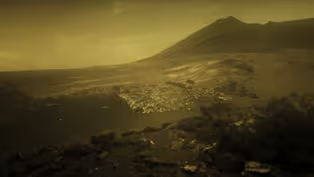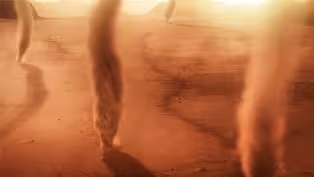
How the Martian Atmosphere Helped Nasa’s Rovers Restore Energy
Clip: Season 51 Episode 9 | 2m 59sVideo has Closed Captions
Martian dust devils may have helped NASA’s rovers restore power during mission.
NASA's Spirit and Opportunity rovers exceeded their expected lifespan on Mars. Unique Martian weather conditions may have played a role in restoring their energy levels.
Problems playing video? | Closed Captioning Feedback
Problems playing video? | Closed Captioning Feedback
National Corporate funding for NOVA is provided by Carlisle Companies and Viking Cruises. Major funding for NOVA is provided by the NOVA Science Trust, the Corporation for Public Broadcasting, and PBS viewers.

How the Martian Atmosphere Helped Nasa’s Rovers Restore Energy
Clip: Season 51 Episode 9 | 2m 59sVideo has Closed Captions
NASA's Spirit and Opportunity rovers exceeded their expected lifespan on Mars. Unique Martian weather conditions may have played a role in restoring their energy levels.
Problems playing video? | Closed Captioning Feedback
How to Watch NOVA
NOVA is available to stream on pbs.org and the free PBS App, available on iPhone, Apple TV, Android TV, Android smartphones, Amazon Fire TV, Amazon Fire Tablet, Roku, Samsung Smart TV, and Vizio.
Buy Now

NOVA Labs
NOVA Labs is a free digital platform that engages teens and lifelong learners in games and interactives that foster authentic scientific exploration. Participants take part in real-world investigations by visualizing, analyzing, and playing with the same data that scientists use.Providing Support for PBS.org
Learn Moreabout PBS online sponsorship- [Narrator] In January, 2004, Spirit and Opportunity began to investigate Mars, but their mission wasn't expected to last very long.
- Mars is covered in dust.
It gets everywhere, including on the solar panels of Mars Rovers.
- As the solar panels got dustier and dustier, the power levels that the rover would have would get lower and lower and lower, and eventually they would just stop working.
- [Narrator] The team hoped the rovers would last at least three months, a feat they surpassed.
But as the months wore on, the power levels continued to drop.
- What was really exciting was at one point in the mission, as we were seeing the power levels getting lower and lower and lower, all of a sudden the power levels were back up high again, almost as high as they were when the rovers had landed.
And you can take a look at the before and after pictures and you can see that it looks like the solar panels have just been wiped clean.
You could call up AAA and send them to Mars with the rag to clean everything off, they couldn't have done a better job.
(mysterious music) - [Narrator] Finally, a clue to what might be happening was spotted by Spirit's nav cam.
In the mid-afternoon sun, heating of the Martian surface creates towering vortices, which can grow miles high.
Dust devils.
- I imagine it would be absolutely terrifying to be standing on the surface of Mars and see one of these dust devils coming straight at you.
- You might think that there was this tornado-force wind coming towards the rover and it might pick the rover up and spin 'em around and do all sorts of horrible things, but in reality, the Martian atmosphere is actually very, very thin.
And so you can have a dust devil pass over you and you would barely even notice it.
- But even though a Martian dust devil might not be able to pick you up, it can certainly pick dust up.
- [Narrator] It's thought that as these whirlwinds traveled over the rovers, they sucked dust off the solar panels like a vacuum.
So a mission expected to last just a few months was extended again.
And again.
And again.
But the cleaning power of the dust devils doesn't just work on rovers.
As they travel, these huge vortices suck up dust from Mars' surface, exposing the darker bedrock beneath, leaving trails so large, you can see them clearly from space.
There are no martians creating the lines.
The culprit is the Martian atmosphere.
(dramatic music)
Venus: The Planet With Battery Acid Clouds
Video has Closed Captions
Clip: S51 Ep9 | 3m 27s | This is what it would be like to walk on the surface of Venus. (3m 27s)
Solar System: Storm Worlds Preview
Video has Closed Captions
Preview: S51 Ep9 | 30s | Discover the dramatic forces creating spectacular weather on neighboring planets and moons. (30s)
Providing Support for PBS.org
Learn Moreabout PBS online sponsorship
- Science and Nature

Capturing the splendor of the natural world, from the African plains to the Antarctic ice.

- Science and Nature

Learn how centuries of knowledge helped our ancestors understand the mysteries of space.












Support for PBS provided by:
National Corporate funding for NOVA is provided by Carlisle Companies and Viking Cruises. Major funding for NOVA is provided by the NOVA Science Trust, the Corporation for Public Broadcasting, and PBS viewers.



